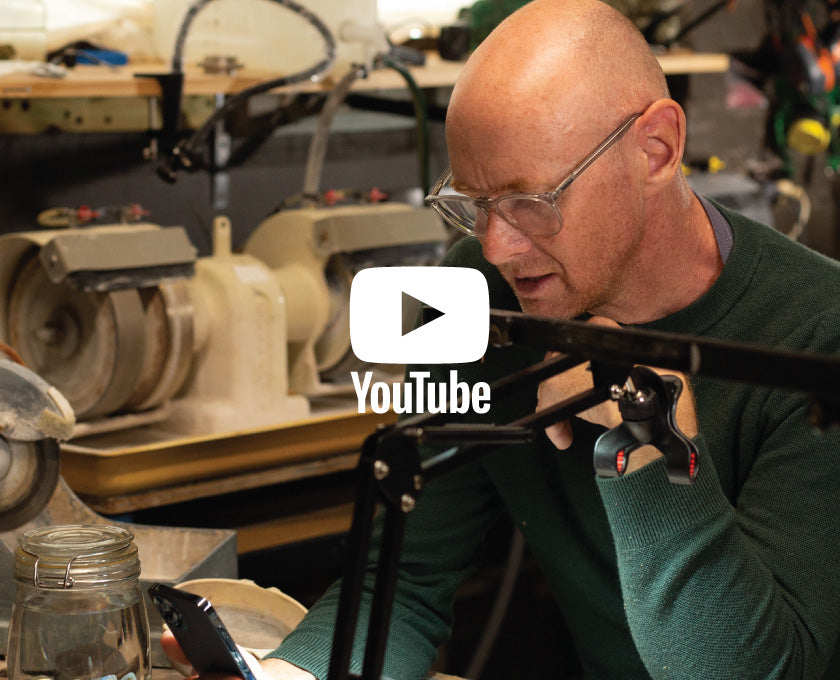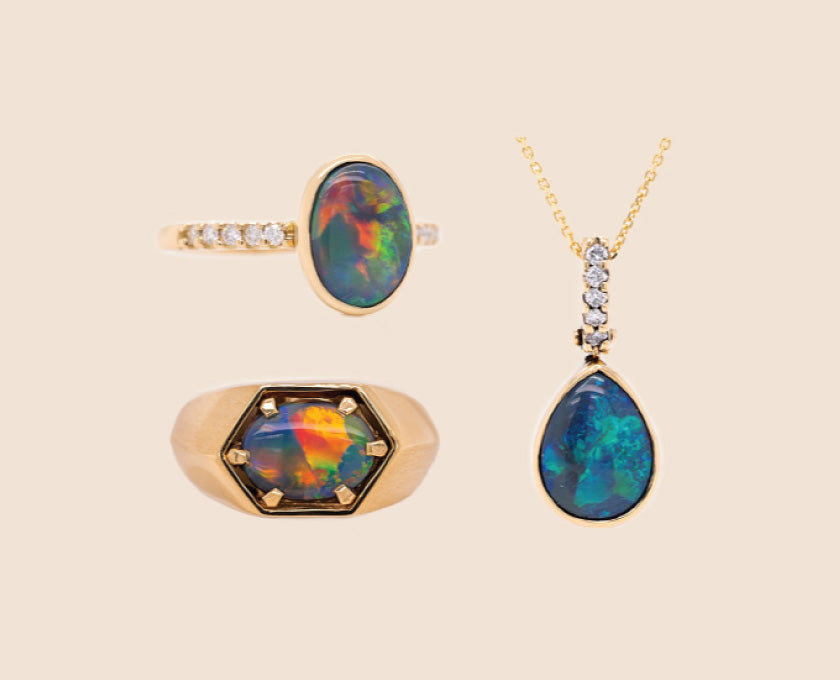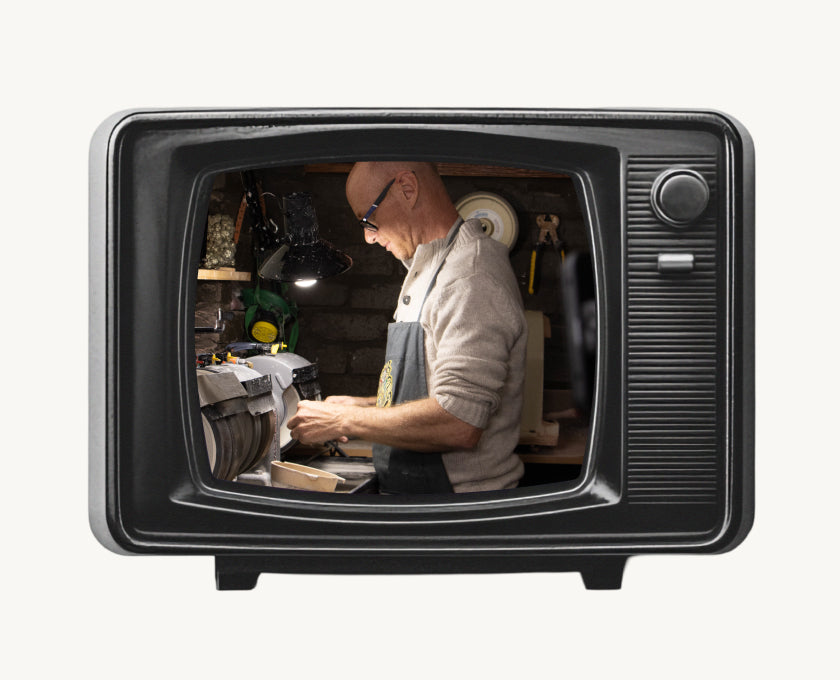Opal fossils are opals formed in the cavity left underground by an animal that has perished and left the shape of its former self to be filled by silica spheres over many years. The rain that falls on the ground seeps into the ground taking thousands of years, carries the rich silica spheres through the cavities, cracks and fissures underground until it has nowhere else to go and fill the cavity to form opal.
 Image supplied by the Australian Opal Centre
Image supplied by the Australian Opal CentreThere are many different explanations for how it is formed, some say it is formed by bacteria, some say the clay balls underground get washed around by the water and slowly ground away leaving cavities for the silica opal to form in, making hobbies.
When an opal fossil has been formed, it takes the shape of whatever has been left there before, so it could be wood, shells, bones, and other organic material.
There have been all sorts of opalised fossils found in Lighting Ridge, the rarest being animal sculls. But there have been things like tortoise bones, snakes, dinosaurs, marsupials, yabby shells and buttons. Teeth are a very sort after type of fossil especially when they have color formed in the opal fossil itself.
Fossils can produce gem color opal in black opal, white opal and crystal opal.
Some opal cutters will forgo the fossil to cut a solid opal out of the piece because it may fetch more money than the fossil is worth. It is a shame to cut up a fossil but when it comes to a miner making money and paying the bills they will take the money.
Opal fossils are mostly found in the form of shells, Lightning Ridge and Coober Pedy have produced many opal fossil shells over the years. Lightning Ridge has produced some black opal shells where Coober Pedy mostly produced Crystal opal and white opal crystal.
Many opal miners have jars of shells sitting on their shelves waiting for a fossil collector to come in and buy them off them in one big bunch or parcel.
Over my time of collecting fossils, I have had many opal shells, a few opalised bones, wood and yabbie buttons.
I once had an opalised gem colored shell which I eventually took out of my private collection and sold for $4000.
I think that any collector that has started collecting fossils will one day have a fortune because the opal fossils are getting rarer and rarer.
Read more
Natural opal is the term used for opal that has naturally formed in the ground in areas where silica is in high concentration through the natural fissures and cavities that have been formed undergr...

You can feel the ‘buzz in the air’! Justin has just received news from his mining crew at Lightning Ridge that they have struck opal. Justin is on his way in his 4WD to see what his mining crew ha...



